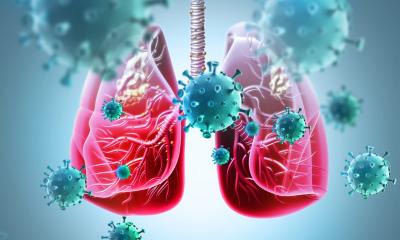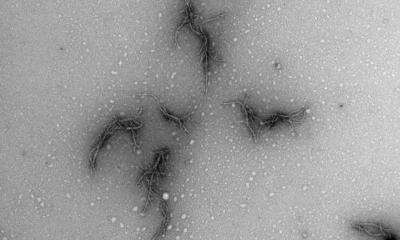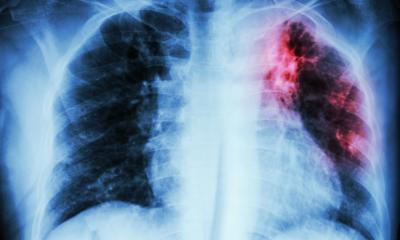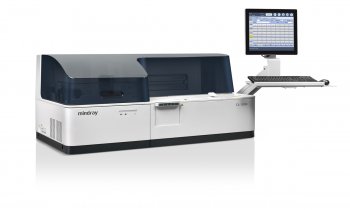Article • Re-evaluation of the coronavirus disease
COVID-19: A tale of two conditions
The SARS CoV-2 virus which causes COVID-19 may have been named prematurely. As more has become known about the infection, the severe disease does not appear to be a respiratory syndrome at all.
Author: Steve Walton, Clinical Applications Manager at Benson Viscometers
Image source: Centers for Disease Control and Prevention (CDC) / Alissa Eckert, MSMI; Dan Higgins, MAMS; Editing: HiE/Behrends
Patients who only have a respiratory illness tend not to have a severe condition, while patients who develop a severe condition tend to have non-respiratory conditions, primarily thrombotic or hyper-immune states. Why should this be? Although scientists and clinicians still do not fully understand what COVID-19 does to a patient several facts have emerged over the last 6 months that at least allows us to speculate, or for the scientists hypothesise what is happening.
It appears when first infected with the virus patients suffer no symptoms (asymptomatic) for the first 48 to 72 hours. During this period they are contagious and capable of spreading the infection to others. After this initial lag phase the patient then progresses down one of two paths, either they remain asymptomatic or they develop a cough and fever which may require them taking to their beds as with flu.
Recommended article
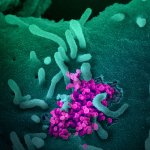
News • Coronavirus duration questioned
COVID-19 symptoms disappear – while the virus itself remains
In a new study, researchers found that half of the patients they treated for mild COVID-19 infection still had coronavirus for up to eight days after symptoms disappeared. The research letter was published online in the American Thoracic Society’s American Journal of Respiratory and Critical Care Medicine.
The patients who remain symptom free pose a large threat to the rest of the population, as they tend to carry on with normal life; unaware that they are passing on the virus to people they meet; on the bus, at the shops, at work, in the park etc. Identifying these carriers is difficult and requires back tracing from patients who develop symptoms. Patients who develop symptoms again divide in to two groups, those that after 9 or 10 days start to get better, and those that after 9 to 10 days get markedly worse. For the patients that start to improve after this time they tend to fully recover like after flu.
Up to this point patients can be classed as having one condition, a respiratory illness, albeit not acute. It is the patients who deteriorate after about a week to 10 days that develop a second condition. This second condition, although initiated by becoming infected with SARS-CoV-2, does not appear to be directly related to viral activity, but is more probably due to the patient’s body being unable to control its defence mechanisms.
When a human body becomes infected several distinct but interactive defence systems are activated. These include the coagulation system; the immune system both cellular and chemical, the complement system (a system which can puncture bacteria) and a little known or understood system called the Kinin-Kallikrein system, which controls inflammation, blood pressure control, coagulation and pain. All of these systems are delicately controlled by a series of activators or inhibitors which work through a series of positive and negative feedback loops to by and large maintain the status quo for the body to continue to function.
If the balance of any of these systems is disrupted then there are serious consequences. Haemophilia an inherited disorder where the coagulation factor, factor 8 (FVIII) is either missing or severely reduced illustrates this point. FVIII is one of more than 20 identified components involved in the control of blood clotting. Yet untreated haemophiliacs have severe life shortening problems.
What does this mean for COVID-19 patients? Scientists are convinced that SARS-CoV-2 infects humans by being pulled in to the epithelial cells which line the airways into and including the lungs. This happens because the protein coat of the virus happens to have either the same or a similar sequence of amino acids to human Angiotensin Converting Enzyme (ACE). The epithelial cells have a sequence of amino acids which causes ACE to stick to it, called ACE receptors. When the virus is inhaled if it comes in contact with a free ACE receptor it binds and enters the cell. Once inside the cell the virus takes over the cells reproductive capacity and millions of new viral particles are produced. The epithelial cells burst and die releasing these millions of virus particles to both bind to more epithelial cells and to be exhaled by the patient to possibly infect other humans.
Recommended article

Article • Coronavirus disease research
Seeking a COVID-19 antidote: the potential of ACE2
As coronavirus disease COVID-19 continues to jet and alight invisibly around the globe, scientists now report that the virus has mutated to become two strains: the older ‘S-type’ appears milder and less infectious, while the later-emerging ‘L-type’, is more aggressive, spreads more quickly, and currently accounts for about 70 per cent of cases. Worldwide, medical researchers are exploring…
Why is this relevant? ACE is a control mechanism for one of the key activation factors of that little understood system the Kinin-Kalikrein, bradykinin. Bradykinin receptors are also found on lung epithelial cells adjacent to the ACE receptors thus under normal conditions ACE bound to lung receptors markedly inhibits the effect of Bradykinin, with the ACE receptor either bound to a SARS-CoV-2 virus or destroyed, patients with COVID-19 have a markedly reduced system for controlling the effects of Bradykinin which has a major impact on the patient and pushes them in to the second condition seen in COVID-19 patients. Bradykinin is a potent activator of several cellular and humoral systems, leading to vasodilation (enlarging of the blood vessels) which causes a drop in blood pressure, porous blood vessels which leads to fluids leaking from the blood into the tissues, including the lungs, activation of the white cells to defend against infection, including monocytes, neutrophils and lymphocytes.
How does this create the second COVID-19 condition? A majority of patients that die from COVID-19 infection do so because of multiple blood clots in various organs including the lung, brain and liver. These patients have been shown to have levels of the coagulation factor fibrinogen 10 times normal. They have also been found to have increased levels of the clotting marker D-Dimer which is only raised when a clot has occurred within the body. Bradykinin is produced by the initial activation of the clotting system which can be activated both by the release of a substance caused tissue factor which is found in high concentrations in lung tissue. Release of tissue factor can be expected when lungs are damaged for example when a virus destroys the cells. Coagulation is also activated when neutrophils are activated to defend against infections because they contain a procoagulant which is released both upon activation and their destruction. Another interesting fact is that fibrinogen production is stimulated by activated monocytes which are found in the liver tissue where fibrinogen is produced.
The chemicals that control all these processes are called cytokines, they are potent activators or inhibitors that are released from various cells when the cell is activated. In COVID-19 patients the balance of cytokine activity is pushed towards activation and the inhibition loops appear either not to be working or overwhelmed by the activation loop.
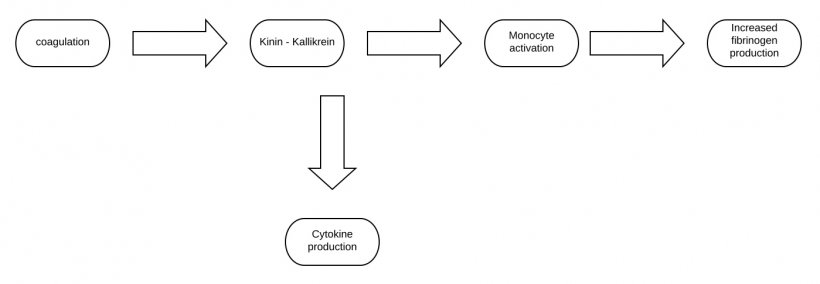
The activation loop appears to have had a major inhibitor removed. The known inhibitor is Angiotensin Converting Enzyme which is known to be impaired by COVID-19 infection. The difference in whether patients develop the second stage of the condition the non-respiratory stage may be down to how many ACE receptors are damaged by the virus before the patient recovers from the first phase.
10.08.2020



